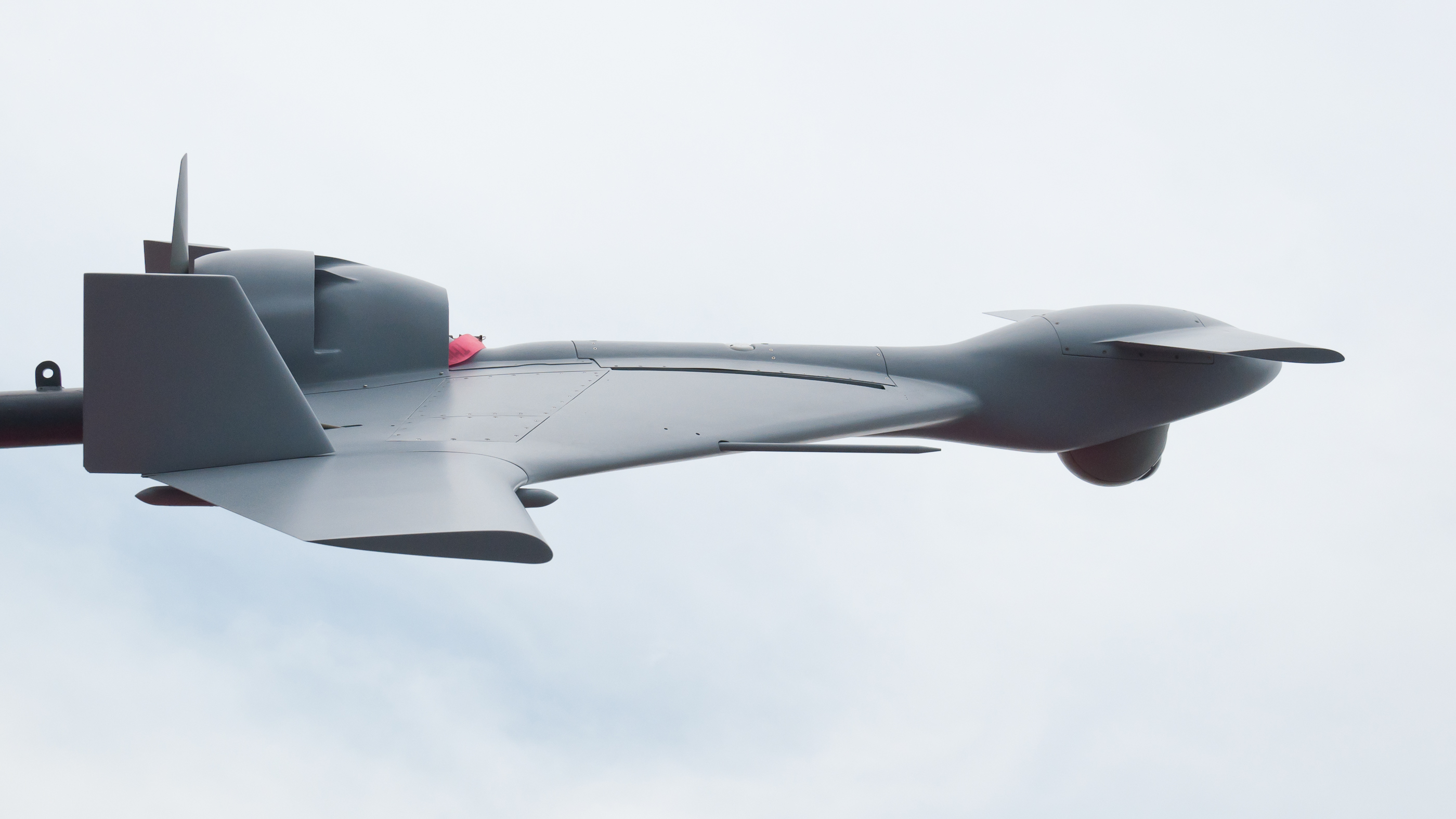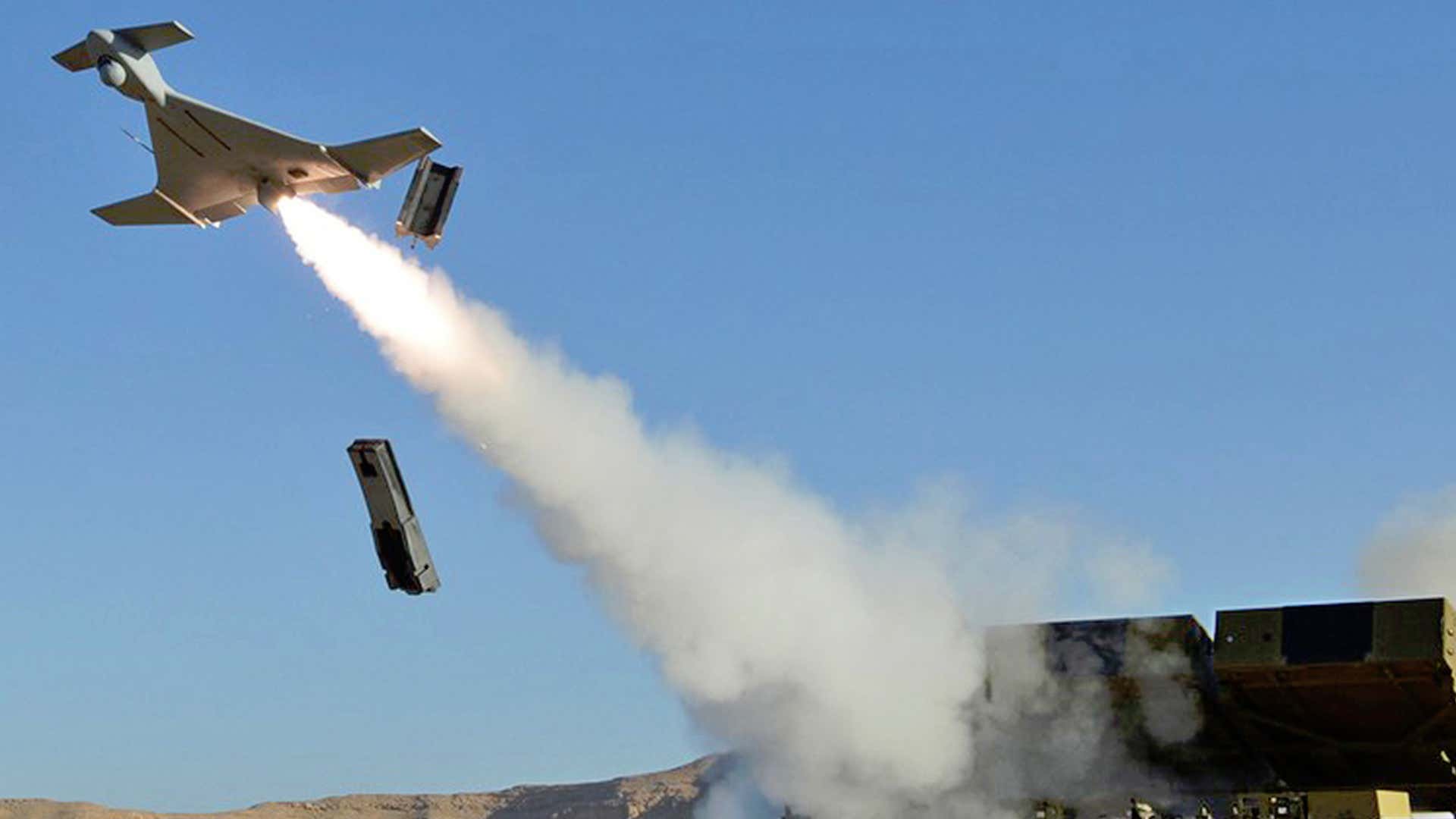A video purporting to show one of the Israeli-made Harop loitering munitions, or suicide drones, used by Azerbaijan during last year’s war with neighboring Armenia, provides some idea of their psychological effect, coupled, of course, with the pinpoint destruction that made this something of a signature weapon of the brief but bloody conflict. The footage, which was shot at night, is accompanied by the wail of the drone as it throttles up and descends almost vertically on its target, which was reportedly an Armenian military outpost in an area that was controlled at the time by the self-proclaimed Republic of Artsakh in the disputed Nagorno-Karabakh region.
The short video was posted to Twitter by Caucasus War Report and appears to document the final moments before the Harop strikes its target, at the end of a terminal dive, at over 250 miles per hour. As the caption notes, the sound produced in its final attack maneuver is reminiscent of “Jericho trumpets” — the sirens attached to German Luftwaffe Junkers Ju 87 Stuka dive-bombers, which became an infamous terror weapon in their own right in the early years of World War II.
Part of a class of weapons that blurs the boundaries between unmanned aircraft and traditional missiles, the Harop is one of a variety of drones acquired by Azerbaijan over the years, including other types of Israeli-made loitering munitions.
Azerbaijan’s Border Guard, also a Harop operator, posted the video below online during the fighting with Armenia last year, apparently focusing on the propaganda value of its buzzing sound over the battlefield:

Produced by Israel Aerospace Industries (IAI), and based on the same company’s earlier Harpy suicide drone, the development of which you can read about here, the Harop can be launched from a canister mounted on a truck or ship, or can even be configured for air-launch. Once in the air, the drone’s wings pop out, after which it operates either autonomously or via man-in-the-loop control, the latter allowing a human operator to see what the drone sees.

When manually guided, the onboard camera allows the operator to track and engage moving targets or it can be equipped with a passive radar seeker to locate and attack radar sites. There’s also an option for both guidance types, allowing a radar site to be targeted even if it stops emitting after being detected. In this scenario, the operator can take over guidance using the electro-optical sensor.
The Harop features an inbuilt warhead in the form of a 50-pound high-explosive charge. However, if the drone doesn’t find a target, it is designed to return to the launch point, meaning it can be recovered and reused. The drone has impressive endurance, being able to loiter for around six hours or cover approximately 600 miles. It can also be configured to return home autonomously and land once its fuel runs low.
Even before the fighting in Nagorno-Karabakh last year, the Harop had gained a notable combat record in Azerbaijani hands, being used in previous skirmishes in the disputed region.
The Harop seems to have been used for the first time, by any operator, when violence broke out in Nagorno-Karabakh in 2016. The Azerbaijani drones reportedly successfully hit many targets including artillery, air defense systems artillery systems, and, on one occasion, a busload of ethnic Armenian fighters.

In April 2018, video footage emerged of Azerbaijani forces using the Harop in a slickly produced music video honoring the country’s State Border Service. Earlier in August 2018, the suicide drones reappeared at drills along the Caspian Sea, on the opposite side of the country from Nagorno-Karabakh.
The loitering munitions were again a major factor in the fighting that broke out in the same region late last September, a conflict that The
War Zone reported on at the time.
The impact of the Harop on enemy troops during the fighting over Nagorno-Karabakh last year also did not go unnoticed by Azerbaijan. The authorities there sought to exploit the potentially demoralizing impact of these explosive-laden drones and the Border Guard released at least two very brief propaganda videos simply featuring the Harop and the sound of its engine along with the message “Karabakh is Azerbaijan!” Those videos can be seen in this previous story on the topic.
The potentially game-changing aspects of suicide drones and other weaponized unmanned aerial systems have also been acknowledged by U.S. officials. As Air Force Magazine recently reported, the spread of small unmanned aerial systems, carrying explosive payloads, has been acknowledged as the most “persistent and dangerous” threat to troops in the Middle East by U.S. Central Command (CENTCOM) boss U.S. Marine Corps General Kenneth F. McKenzie Jr.
General McKenzie was referring to the kinds of commercially available drones that can be weaponized by insurgent groups such as ISIS, but they essentially present a similar kind of threat on the battlefield to the off-the-shelf Harop. Relatively cheap, possessing useful endurance and accuracy, and able to be deployed in significant numbers, they can have an effect thoroughly disproportionate to their diminutive size.
“These small- and medium-sized UAS proliferating across the [area of operations] present a new and complex threat to our forces and those of our partners and allies,” General McKenzie told the House Armed Services Committee yesterday. “For the first time since the Korean War, we are operating without complete air superiority.”
Now that these kinds of drones have also started killing people, counter-drone technology has become a “top priority” for CENTCOM, in the words of General McKenzie.
The video we see here provides a brief, sobering demonstration of what it might be like to experience the wrong side of the Harop on the battlefield. Combined with the drone’s apparent unerring accuracy, it is perhaps little wonder that interest in these types of capabilities spiked sharply in the wake of the last round of fighting in Nagorno-Karabakh.
Contact the author: thomas@thedrive.com
